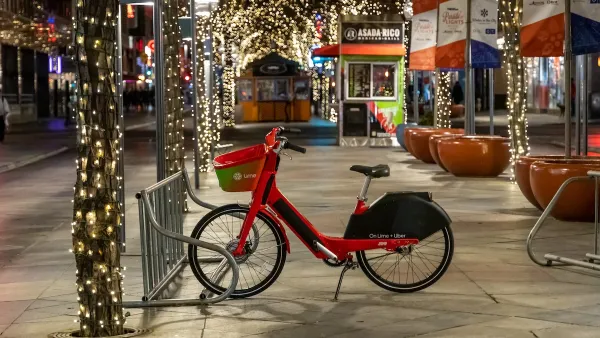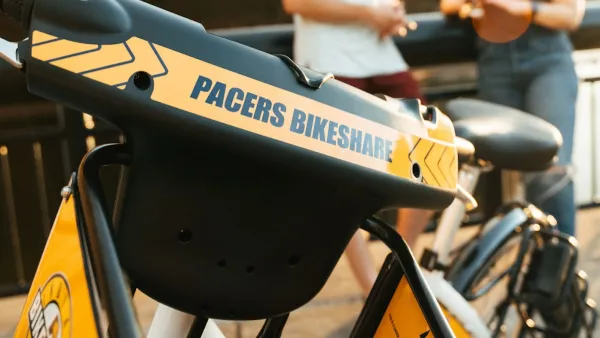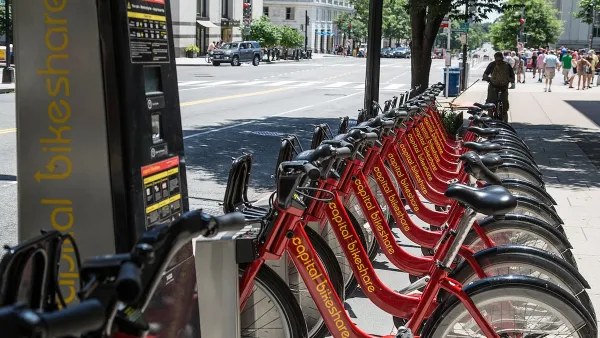The popularity of e-bikes continues to drive growth for shared mobility systems.

Shared micromobility users in the United States and Canada took a record 157 million trips in 2023, according to a report from the National Association of City Transportation Officials (NACTO). “People took 133 million trips on shared micromobility in the U.S. Trips in the U.S. increased by 16% in 2023, driven largely by the continued growth of e-bike trips on larger station-based systems.” Canadian riders took 24 million trips.
The report notes that “Despite the overwhelming popularity of these systems, many cities are grappling with the challenges of providing this essential service while facing limited financial and operational resources. A volatile private operator landscape coupled with increasing user costs threatens to limit the potential for shared micromobility to be affordable and accessible to all.”
The high cost of bike share and e-scooters compared to other public transit options is still a challenge, the report adds, with the average cost of a bike share trip costing roughly $3 for the first 30 minutes and scooters costing anywhere from $6 to $11 per trip. “At these rates, e-scooters and e-bikes are not an affordable everyday option for most people.”
The report recommends that cities provide stable funding to ensure reliable and affordable service that complements other transit options. The report stresses the urgency of designing “durable operational models” to maintain and improve shared mobility systems for the long term.
FULL STORY: Shared Micromobility in 2023

National Parks Layoffs Will Cause Communities to Lose Billions
Thousands of essential park workers were laid off this week, just before the busy spring break season.

Retro-silient?: America’s First “Eco-burb,” The Woodlands Turns 50
A master-planned community north of Houston offers lessons on green infrastructure and resilient design, but falls short of its founder’s lofty affordability and walkability goals.

Delivering for America Plan Will Downgrade Mail Service in at Least 49.5 Percent of Zip Codes
Republican and Democrat lawmakers criticize the plan for its disproportionate negative impact on rural communities.

Test News Post 1
This is a summary

Test News Headline 46
Test for the image on the front page.

Balancing Bombs and Butterflies: How the National Guard Protects a Rare Species
The National Guard at Fort Indiantown Gap uses GIS technology and land management strategies to balance military training with conservation efforts, ensuring the survival of the rare eastern regal fritillary butterfly.
Urban Design for Planners 1: Software Tools
This six-course series explores essential urban design concepts using open source software and equips planners with the tools they need to participate fully in the urban design process.
Planning for Universal Design
Learn the tools for implementing Universal Design in planning regulations.
EMC Planning Group, Inc.
Planetizen
Planetizen
Mpact (formerly Rail~Volution)
Great Falls Development Authority, Inc.
HUDs Office of Policy Development and Research
NYU Wagner Graduate School of Public Service





























